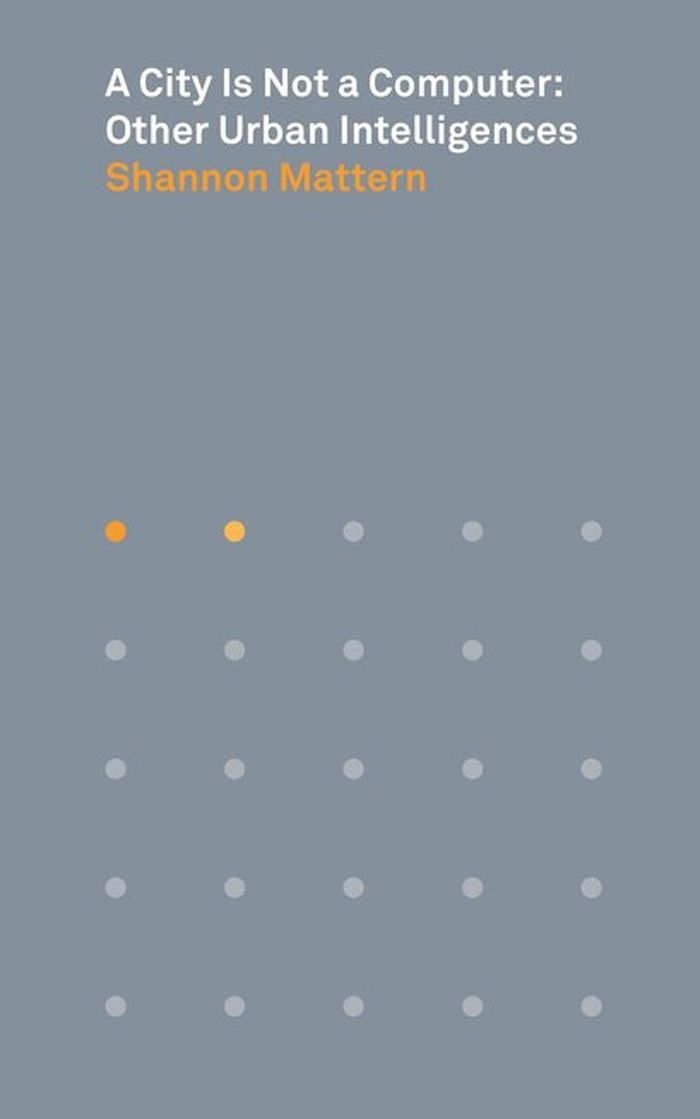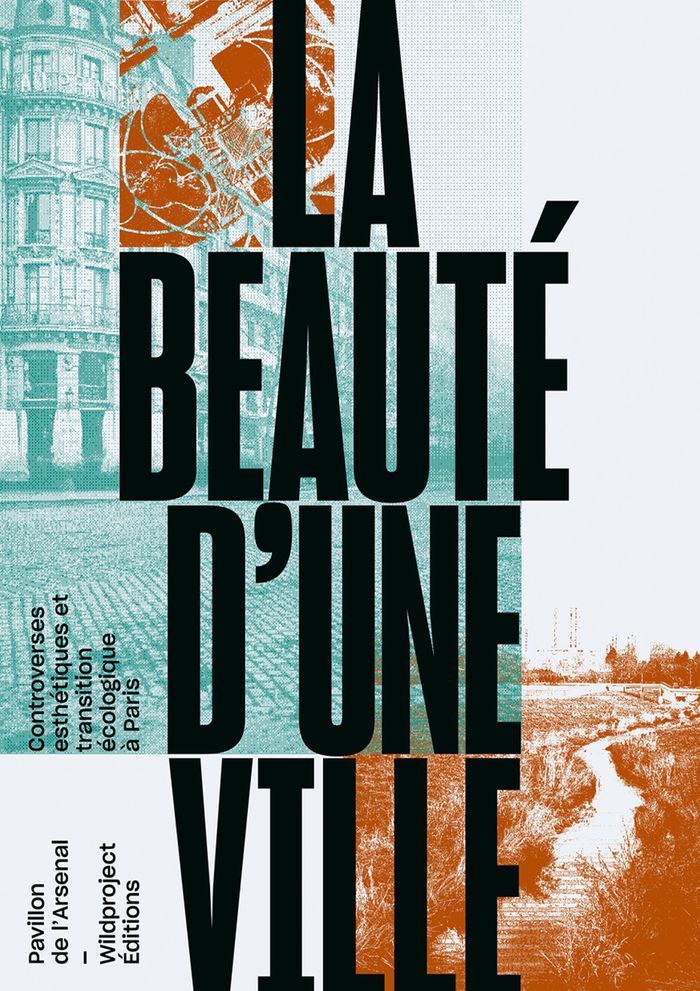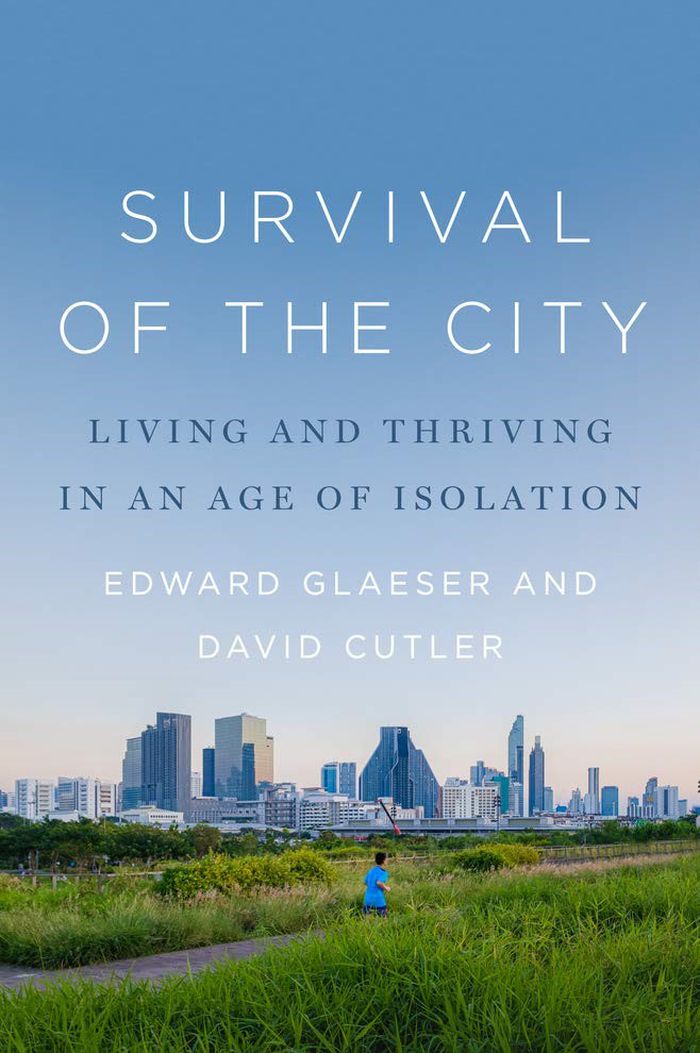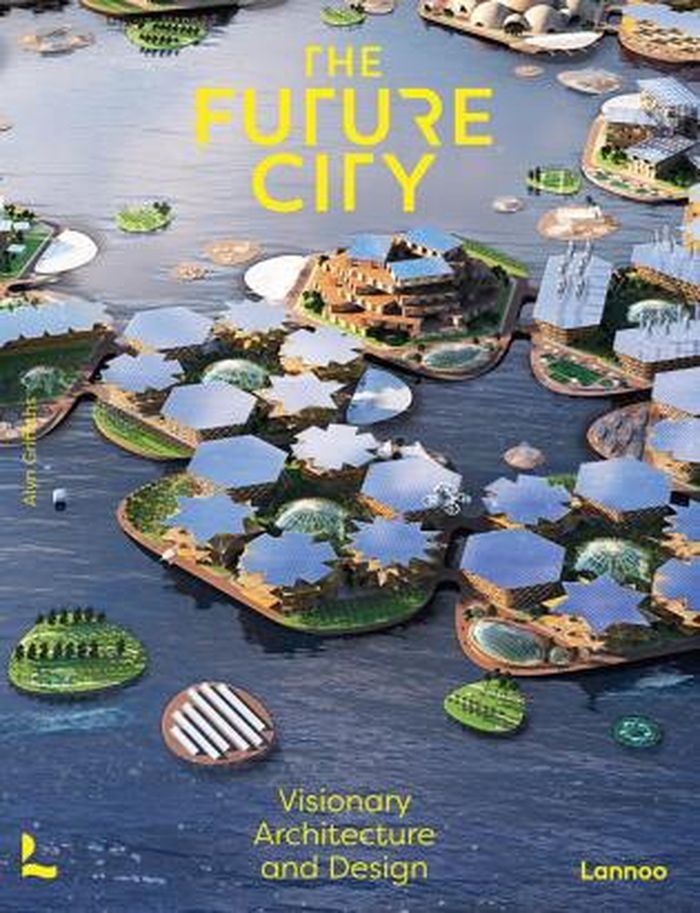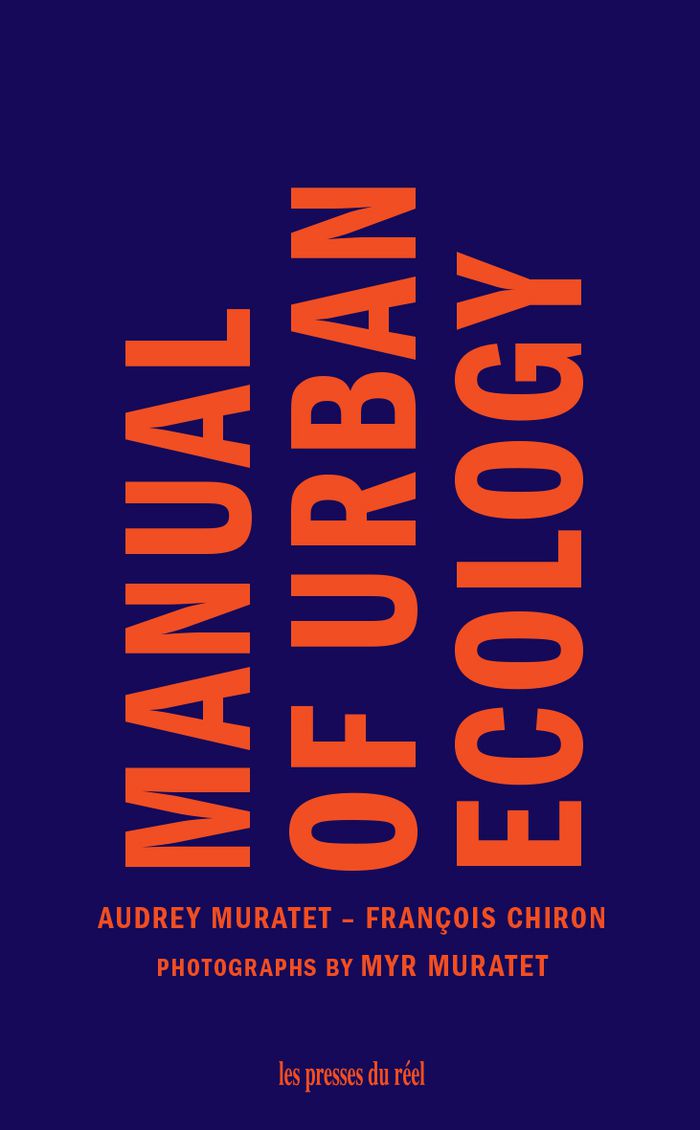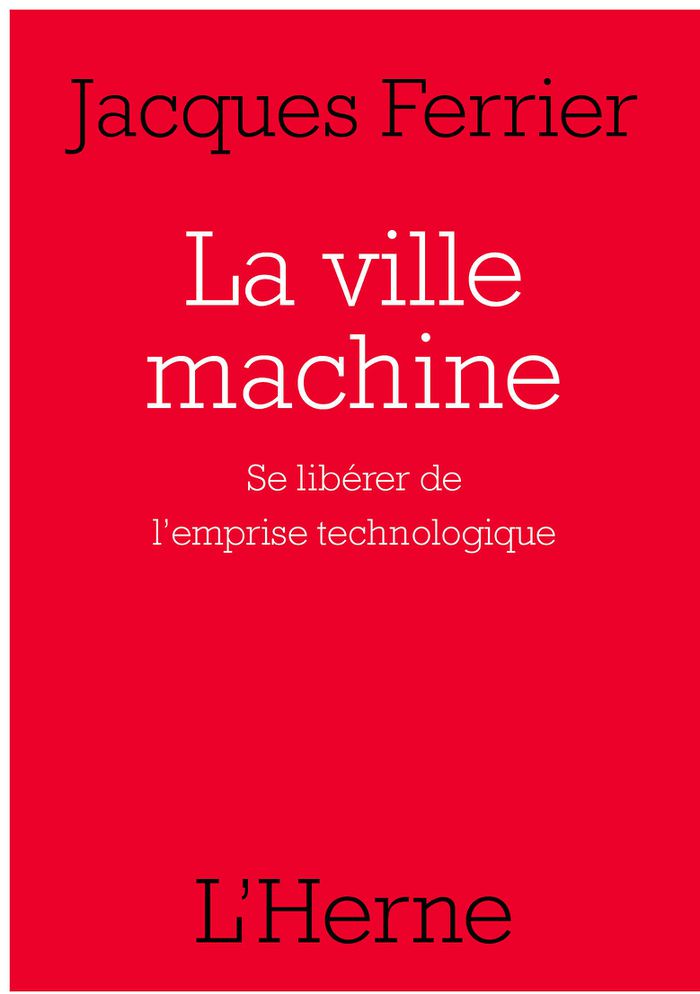$25.00
(disponible sur commande)
Résumé:
Computational models of urbanism — smart cities that use data-driven planning and algorithmic administration — promise to deliver new urban efficiencies and conveniences. Yet these models limit our understanding of what we can know about a city. 'A City Is Not a Computer' reveals how cities encompass myriad forms of local and indigenous intelligences and knowledge(...)
A city is not a computer: other urban intelligences
Actions:
Prix:
$25.00
(disponible sur commande)
Résumé:
Computational models of urbanism — smart cities that use data-driven planning and algorithmic administration — promise to deliver new urban efficiencies and conveniences. Yet these models limit our understanding of what we can know about a city. 'A City Is Not a Computer' reveals how cities encompass myriad forms of local and indigenous intelligences and knowledge institutions, arguing that these resources are a vital supplement and corrective to increasingly prevalent algorithmic models.
Théorie de l’urbanisme
$44.00
(disponible sur commande)
Résumé:
Cities are becoming increasingly fragmented materially, socially, and spatially. From broken toilets and everyday things, to art and forms of writing, fragments are signatures of urban worlds and provocations for change. In "Fragments of the city," Colin McFarlane examines such fragments, what they are and how they come to matter in the experience, politics, and(...)
Fragments of the city: making and remaking urban worlds
Actions:
Prix:
$44.00
(disponible sur commande)
Résumé:
Cities are becoming increasingly fragmented materially, socially, and spatially. From broken toilets and everyday things, to art and forms of writing, fragments are signatures of urban worlds and provocations for change. In "Fragments of the city," Colin McFarlane examines such fragments, what they are and how they come to matter in the experience, politics, and expression of cities. How does the city appear when we look at it through its fragments? For those living on the economic margins, the city is often experienced as a set of fragments. Much of what low-income residents deal with on a daily basis is fragments of stuff, made and remade with and through urban density, social infrastructure, and political practice. In this book, McFarlane explores infrastructure in Mumbai, Kampala, and Cape Town; artistic montages in Los Angeles and Dakar; refugee struggles in Berlin; and the repurposing of fragments in Hong Kong and New York. Fragments surface as material things, as forms of knowledge, as writing strategies. They are used in efforts to politicize the city and in urban writing to capture life and change in the world's major cities. "Fragments of the city" surveys the role of fragments in how urban worlds are understood, revealed, written, and changed.
Théorie de l’urbanisme
La beauté autour d'une ville
$72.95
(disponible sur commande)
Résumé:
Qu’est-ce qui fait la beauté d’une ville? Son site, ses bâtiments, ses jardins, ses matières, ses rivières? Ses habitants, ses milieux, son hospitalité, ses fragilités, sa mesure? Comment se définit, en fonction des projets et des contraintes de chaque siècle, l’esthétique urbaine? Quelles formes doit inventer la ville pour opérer sa transition(...)
Théorie de l’urbanisme
août 2021
La beauté autour d'une ville
Actions:
Prix:
$72.95
(disponible sur commande)
Résumé:
Qu’est-ce qui fait la beauté d’une ville? Son site, ses bâtiments, ses jardins, ses matières, ses rivières? Ses habitants, ses milieux, son hospitalité, ses fragilités, sa mesure? Comment se définit, en fonction des projets et des contraintes de chaque siècle, l’esthétique urbaine? Quelles formes doit inventer la ville pour opérer sa transition climatique? Architectes, écrivains, philosophes, historiens, paysagistes, artistes, écologues, sociologues, urbanistes… À partir des enjeux parisiens émergents, 56 autrices et auteurs explorent nos héritages et esquissent l’avenir de nos territoires urbains. Un pied dans l’histoire, et l’autre engagé sur les chemins de l’écologie, cet ouvrage collectif conçu comme une promenade nous invite à regarder d’un autre œil la beauté de Paris.
Théorie de l’urbanisme
$40.00
(disponible sur commande)
Résumé:
Cities can make us sick. They always have—diseases spread more easily when more people are close to one another. And disease is hardly the only ill that accompanies urban density. Cities have been demonized as breeding grounds for vice and crime from Sodom and Gomorrah on. But cities have flourished nonetheless because they are humanity’s greatest invention, indispensable(...)
Survival of the city: Living and thriving in an age of isolation
Actions:
Prix:
$40.00
(disponible sur commande)
Résumé:
Cities can make us sick. They always have—diseases spread more easily when more people are close to one another. And disease is hardly the only ill that accompanies urban density. Cities have been demonized as breeding grounds for vice and crime from Sodom and Gomorrah on. But cities have flourished nonetheless because they are humanity’s greatest invention, indispensable engines for creativity, innovation, wealth, and connection, the loom on which the fabric of civilization is woven. But cities now stand at a crossroads. During the global COVID crisis, cities grew silent as people worked from home—if they could work at all. The normal forms of socializing ground to a halt. How permanent are these changes? Advances in digital technology mean that many people can opt out of city life as never before. Will they? Are we on the brink of a post-urban world? City life will survive but individual cities face terrible risks, argue Edward Glaeser and David Cutler, and a wave of urban failure would be absolutely disastrous. In terms of intimacy and inspiration, nothing can replace what cities offer. Great cities have always demanded great management, and our current crisis has exposed fearful gaps in our capacity for good governance. It is possible to drive a city into the ground, pandemic or not. Glaeser and Cutler examine the evolution that is already happening, and describe the possible futures that lie before us.
Théorie de l’urbanisme
$59.95
(disponible sur commande)
Résumé:
Should all-inclusive engagement be the major task of architecture? This publication presents the case that the answer is yes. Through original contributions and case studies, this volume shows that socially engaged architecture is both a theoretical construct and a professional practice navigating the global politics of poverty, charity, health, technology, neoliberal(...)
All-inclusive engagement in architecture: towards the future of social change
Actions:
Prix:
$59.95
(disponible sur commande)
Résumé:
Should all-inclusive engagement be the major task of architecture? This publication presents the case that the answer is yes. Through original contributions and case studies, this volume shows that socially engaged architecture is both a theoretical construct and a professional practice navigating the global politics of poverty, charity, health, technology, neoliberal urbanism, and the discipline's exclusionary basis. The scholarly ideas and design projects of 58 thought leaders demonstrate the architect's role as a revolutionary social agent. Exemplary works are included from the United States, Mexico, Canada, Africa, Asia, and Europe. This book offers a comprehensive overview and in-depth analysis of all-inclusive engagement in public interest design for instructors, students, and professionals alike, showing how this approach to architecture can bring forth a radical reformation of the profession and its relationship to society.
Théorie de l’urbanisme
$74.00
(disponible sur commande)
Résumé:
What might the city of the future look like and how might it meet the needs of future generations while limiting damage to our planet's fragile ecosystem? This book introduces pioneering architects, designers and planners whose visions for an alternative urban future address issues such as climate change, population density, infrastructure, transportation and digital(...)
The future city: Visionary urban design and architecture
Actions:
Prix:
$74.00
(disponible sur commande)
Résumé:
What might the city of the future look like and how might it meet the needs of future generations while limiting damage to our planet's fragile ecosystem? This book introduces pioneering architects, designers and planners whose visions for an alternative urban future address issues such as climate change, population density, infrastructure, transportation and digital culture. It includes over 40 radical projects grouped into five key categories: master planning and megacities, transportation and infrastructure, new habitats, green cities/ urban farming, and smart cities. Each category summarises trends that will drive the development of future cities, with each project representing a unique approach to urban development in the 21st century and beyond.
Théorie de l’urbanisme
$24.95
(disponible sur commande)
Résumé:
During the two hundred millennia we've been on the planet, nothing has shaped us more profoundly than the city. In a fascinating narrative that ranges through cities famous and forgotten, acclaimed historian Ben Wilson tells the glorious story of how urban living has allowed human culture to flourish. Beginning with Uruk, the world's first city, he shows that cities(...)
Metropolis: a history of the city, mankind's greatest invention
Actions:
Prix:
$24.95
(disponible sur commande)
Résumé:
During the two hundred millennia we've been on the planet, nothing has shaped us more profoundly than the city. In a fascinating narrative that ranges through cities famous and forgotten, acclaimed historian Ben Wilson tells the glorious story of how urban living has allowed human culture to flourish. Beginning with Uruk, the world's first city, he shows that cities created such a blossoming of human endeavor--new professions, new forms of art, worship, and trade--that they kick-started civilization itself. Despite outbreaks of plague and war, and outlasting empires, the city endured and new cities sprang up to capture the inimitable energy of human beings together. Wilson reveals the innovations nurturned amid the density of urban centers over the centuries: civics in the agora of Athens, global trade in ninth-century Baghdad, finance in the coffeehouses of London, domestic comforts in the heart of Amsterdam, peacocking in Belle Epoque Paris. In the modern age, the skyscrapers of New York City inspired utopian visions of community design, while the trees of twenty-first-century Seattle and Shanghai point to a sustainable future in the age of climate change. Page turning and irresistible, ''Metropolis'' is a history of cities that is also a history of how humanity lives.
Théorie de l’urbanisme
Manual of urban ecology
$32.00
(disponible sur commande)
Résumé:
This manual provides the current state of knowledge on the functioning of nature in an urban environment: its ecology. Cities are complex structures that shelter a disparity of living conditions. They can both generate and destroy pools of biodiversity. They are themselves organisms that develop, mutate, and die. This Manual analyzes these phenomena. It affirms several(...)
Manual of urban ecology
Actions:
Prix:
$32.00
(disponible sur commande)
Résumé:
This manual provides the current state of knowledge on the functioning of nature in an urban environment: its ecology. Cities are complex structures that shelter a disparity of living conditions. They can both generate and destroy pools of biodiversity. They are themselves organisms that develop, mutate, and die. This Manual analyzes these phenomena. It affirms several principles to overcome the ecological blindness of city dwellers and avert the agony of urban ecosystems.
Théorie de l’urbanisme
La ville machine
$26.95
(disponible en magasin)
Résumé:
L'épreuve pandémique que nous traversons a révélé l'incapacité des villes à prendre soin de leurs habitants. A partir de ce constat, cet essai interroge le rôle prépondérant qu'a pris la technique dans nos vies métropolitaines, et envisage la crise sanitaire comme une occasion de remettre l'humain au centre du projet urbain. Des transports de masse à la climatisation, des(...)
La ville machine
Actions:
Prix:
$26.95
(disponible en magasin)
Résumé:
L'épreuve pandémique que nous traversons a révélé l'incapacité des villes à prendre soin de leurs habitants. A partir de ce constat, cet essai interroge le rôle prépondérant qu'a pris la technique dans nos vies métropolitaines, et envisage la crise sanitaire comme une occasion de remettre l'humain au centre du projet urbain. Des transports de masse à la climatisation, des appareils ménagers aux outils informatiques, des réseaux d'énergie à ceux de communication, rien ne semble plus possible sans la technique. En accompagnant l'urbanisation planétaire, de servante, elle est devenue maîtresse. La ville a fini par se confondre avec une gigantesque infrastructure. On aurait pu attendre d'elle, en contrepartie, qu'elle soit protectrice. Or, il n'en est rien. Il faut remettre en jeu le corps dans la ville, prendre la question des sens - des cinq sens - au sérieux et placer le vécu de l'habitant au coeur du design urbain. La crise a montré que la relation est la valeur fondamentale de la ville résiliente. Cet essai souligne l'urgence de concevoir la ville autrement, de créer une architecture de la résonance ; résonance avec la planète, avec le contexte, avec l'habitant.
Théorie de l’urbanisme
Athens by collage
$44.95
(disponible en magasin)
Résumé:
In this book, Athens is depicted like an incomplete and unfinished city, in which its parts are in permanent construction, or continual ruination. But it is exactly this permanent condition of instability – its openness and formal instability – that offers the possibility of inhabiting the city again. Once more, the task of collage is to continue with its disruptive and(...)
Athens by collage
Actions:
Prix:
$44.95
(disponible en magasin)
Résumé:
In this book, Athens is depicted like an incomplete and unfinished city, in which its parts are in permanent construction, or continual ruination. But it is exactly this permanent condition of instability – its openness and formal instability – that offers the possibility of inhabiting the city again. Once more, the task of collage is to continue with its disruptive and radical legacy, which is to build and variegate a contradictory and often paradoxical urban iconography that helps make the fragmented and often irreconcilable parts of the city coexist.
Théorie de l’urbanisme
